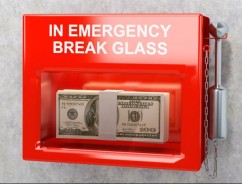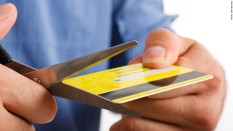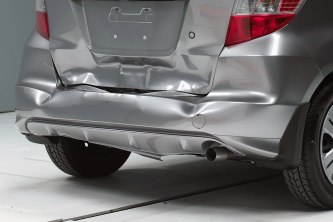3 month challenge to build a $1000 starter emergency fund
The rain was blinding. Nii insisted we leave the hospital in the storm rather than wait for it to ease up. We had taken two cars to work. Renée backed out of her parking space and right into a hydrant. In five minutes, we went from not having a care in the world to needing a car repair of about $1000. Luckily, we had started an emergency fund a few months earlier. We paid cash, incurred no debt, and our car insurance premium didn’t increase. If this happened to you, would you have the cash or would you have to use your credit card?
In life, the one thing you can expect is the unexpected. So, why not prepare yourself by having an emergency fund? Using cash gives you the security of knowing that the emergency is done and paid. A cash payment doesn’t gain interest or late fees like a credit card. Cash is closure! An emergency fund gives you some peace of mind.
Stop talking yourself out of saving your own money!
We know what some of you are thinking… 1) “I can’t build an emergency fund because I have so many monthly bills.” 2) “If I don’t use credit cards, I won’t be able to have the things I need.” 3) “I use my credit card for emergencies only.”
Let’s take a step back and think about those three thoughts. 1) If you have already have so many monthly bills, why do you think that adding another monthly bill would make your situation easier? 2) If you’re relying on credit cards to live, then you likely don’t have money to pay the credit card bills you already have. In other words, you’re living above your means. 3) Using a credit card for emergencies doesn’t relieve you from the debt of the emergency. All it does is put you into more debt and make you pay more because interest fees. Credit is not money!
Chances are that everyday you’re spending money or incurring debt on things that you don’t actually need. You might enjoy eating at that restaurant twice a week, but do you have the money to fix the busted pipe in your basement? Save money now to spend when you actually need it and avoid digging deeper into debt!
6 easy steps to building a starter emergency fund
Let’s, at least, agree that cash is better than credit. If you were selling something, would you want cash or an IOU (I owe you)? Rather than spend the rest of this article trying to convince you to agree with us, we’d like you to prove us wrong! Prove to us that the following steps will not work for building a starter emergency fund of $1000. Your typical emergency fund should be 3-6 months of your monthly expenses. (See our post on creating a debt payoff schedule to figure out your monthly living expenses.) But we are only going to challenge you to save $1000 over the next three months.
Before you take the challenge, log in to your bank account and credit card statements. Pull up your transactions for the last three months. Add up all the money you spent on anything that was not a monthly living expense (fast food, restaurants, cafés, ATM fees, late fees, clothes/accessories, trinkets, gadgets, cigarettes, hair/nail salon, entertainment, infomercial items, etc..). Do they add up to $1000 or more? We think they will for most people.
Now that you’ve seen where your money’s going, here’s the challenge:
- Use your debit card (not credit card) to take out $25 to $50 cash each month to spend on the non-living expenses listed above to reduce your spending on these items for three months. It’s important to have this fun money on hand so you don’t pull out your credit and debit cards for those purchases.
- Use your debit card (not credit card) to take out $100-$300 cash per month for grocery shopping. Use cash only for grocery shopping over the next three months. You’ll find that you are more selective about what you buy.

- Don’t use your credit card for the next three months. Freeze your credit card in a container of ice if you must. Or cut up the card and close the account, but we understand if you’re not there, yet!
- Use your debit card (not credit card) for transportation purposes only (gas, bus, train fare). Remember that you have cash on hand up to $50 for fun money and $300 for groceries. Try to avoid swiping your debit card.
- With the money you save doing the above steps, use $100 to open a separate savings (not checking) bank account for your emergency fund. Many banks allow a $100 opening balance.
- Put $82 per week in the account over the next 11 weeks. Voila! You’ll have $1002 at the end of three months. In a year, you could save over $4000 or more if you’re that aggressive.
But, you didn’t suggest that I make a monthly budget!
That’s right! We did not take into account your income or your monthly expenses. But, chances are neither did you if you don’t have an emergency fund. Our approach to this post was to meet many people where they are. If you have to be convinced not to use your credit cards and to build a cash emergency fund, then you’re probably not sold on making a monthly budget. What might sell you on making a budget is when you realize how much money you spend on things you don’t really need, like fast food and restaurants. At one point, we were spending over $300 a month on dining out. Now, that’s an extra $3600 a year which goes toward our student loans.
Admittedly, we made an assumption that many households spend at least $82 a week on things they don’t need. It’s ok to spend money on things you don’t really need. It’s not ok when the amount that you’re spending on those things hinders your ability to save. If you plan your meals and pack your lunch, you can avoid restaurants and fast food. You don’t need a latté, cigarettes, or that infomercial item. Why spend money on everyday things you don’t need only to not have the money you need in an emergency? Also, using cash instead of your debit and credit cards will make you more conscious about your spending. When the cash runs out, you can’t spend anymore!
Remember that $1000 is just a starter emergency fund. A fully funded emergency is about 3-6 months of your monthly living expenses. By having an emergency fund, you can prevent putting yourself in debt when you have an emergency.
Did you prove us right or wrong? We want to know!
Are you a skeptic or a believer? Are we on point or out of our minds? Take the challenge and tell us if we’re right or wrong about how easy it is to build a starter emergency fund of $1000 in three months. We’re looking to talk with anyone who takes the challenge, successful or not. Leave us a message below or leave us a voice message! Thanks for keeping up!
Posted on September 6, 2015, in debt, money and tagged credit card, emergency fund. Bookmark the permalink. 5 Comments.




Emergency funds bring peace of mind. Good post!
LikeLike
Great advice. An emergency fund is a must or you’ll always be right where you started debt-wise.
LikeLike
Agreed! So many people think that accumulating debt with a credit card actually helps them. Instead it makes things so much more stressful in the long run. Thanks for keeping up!
LikeLike
Thanks, Lavar! We believe that people can win even in what might seem like the most challenging circumstances. Thanks for keeping up with us!
LikeLike
People for the people. I like it.
LikeLike